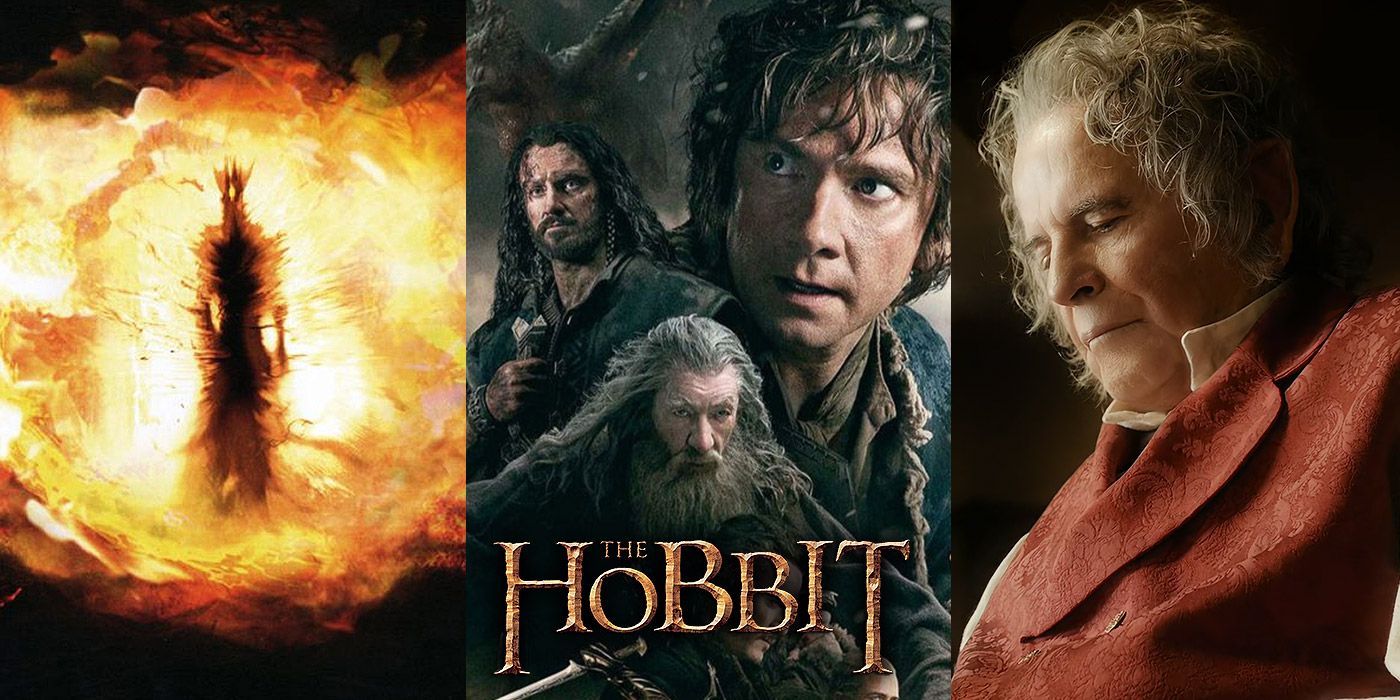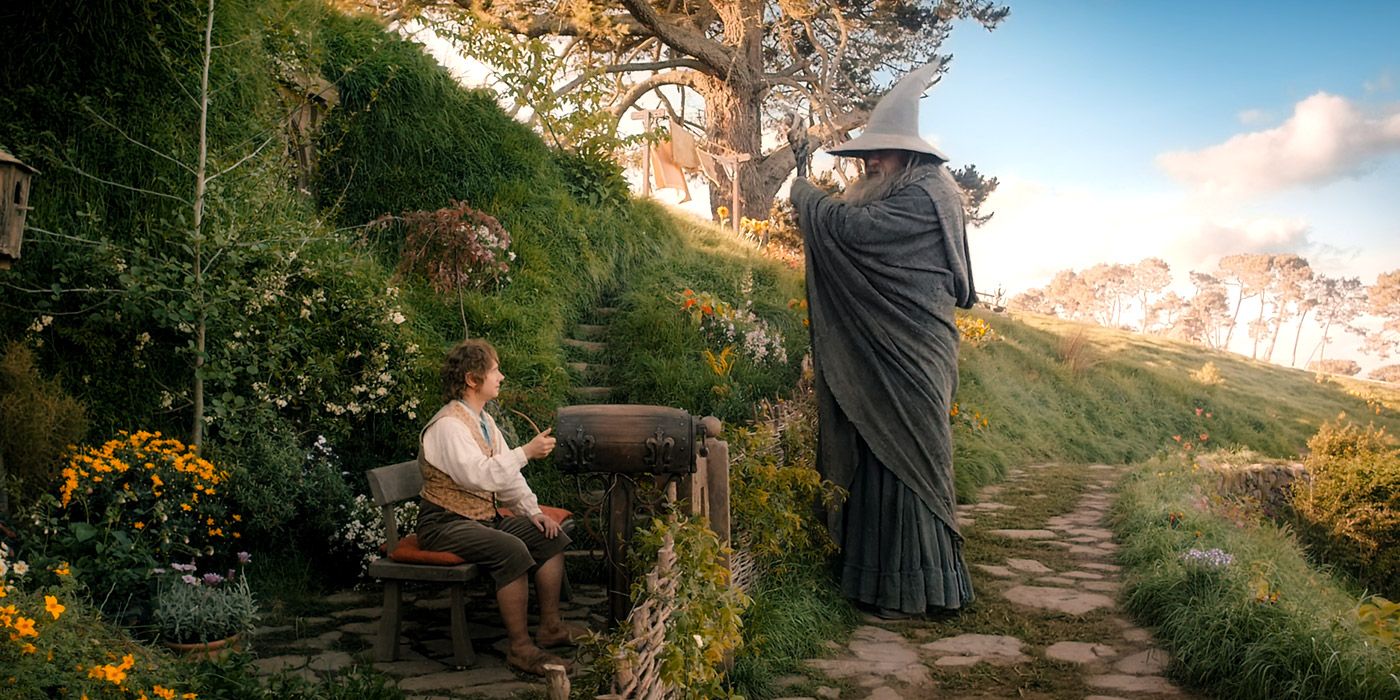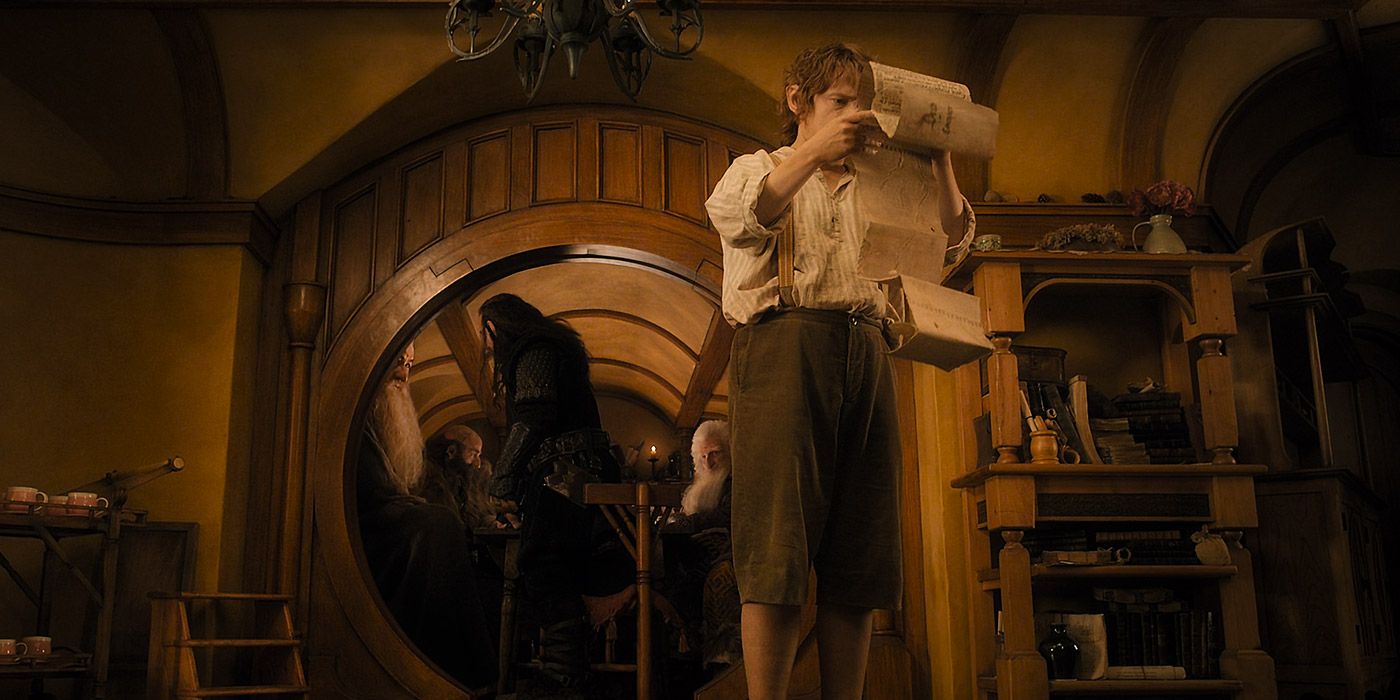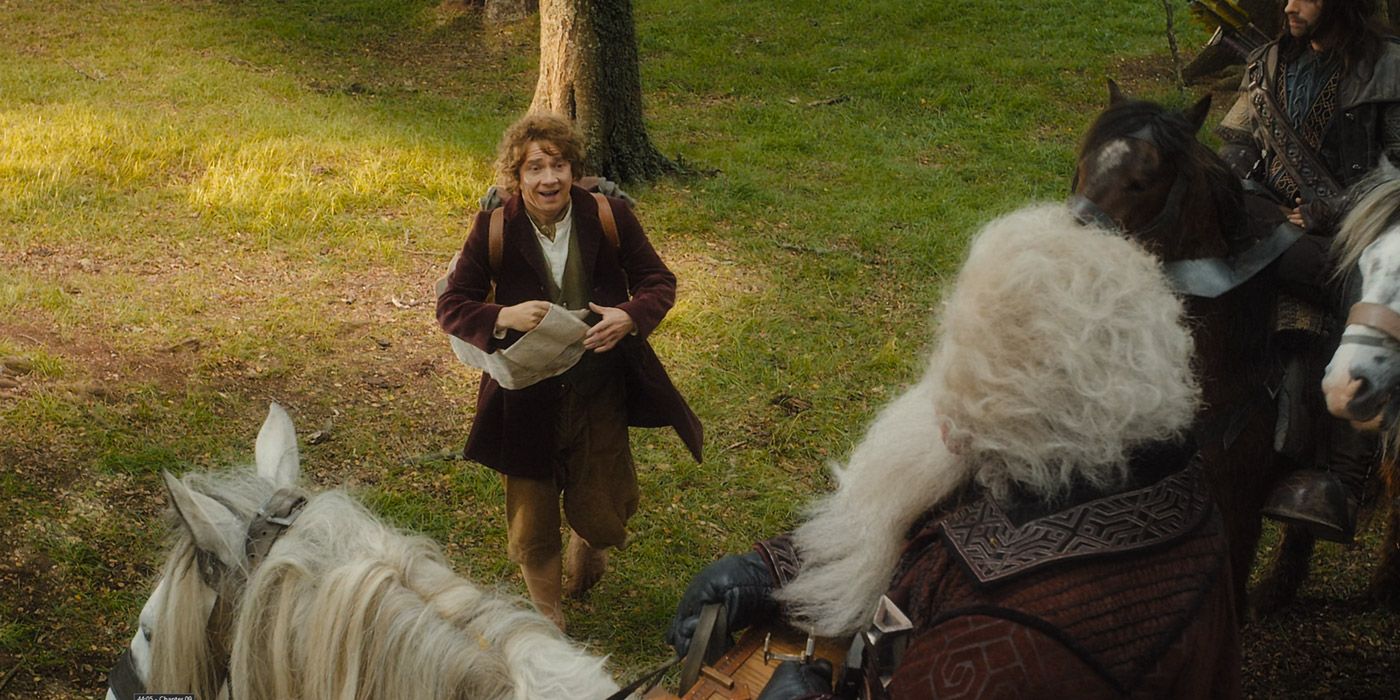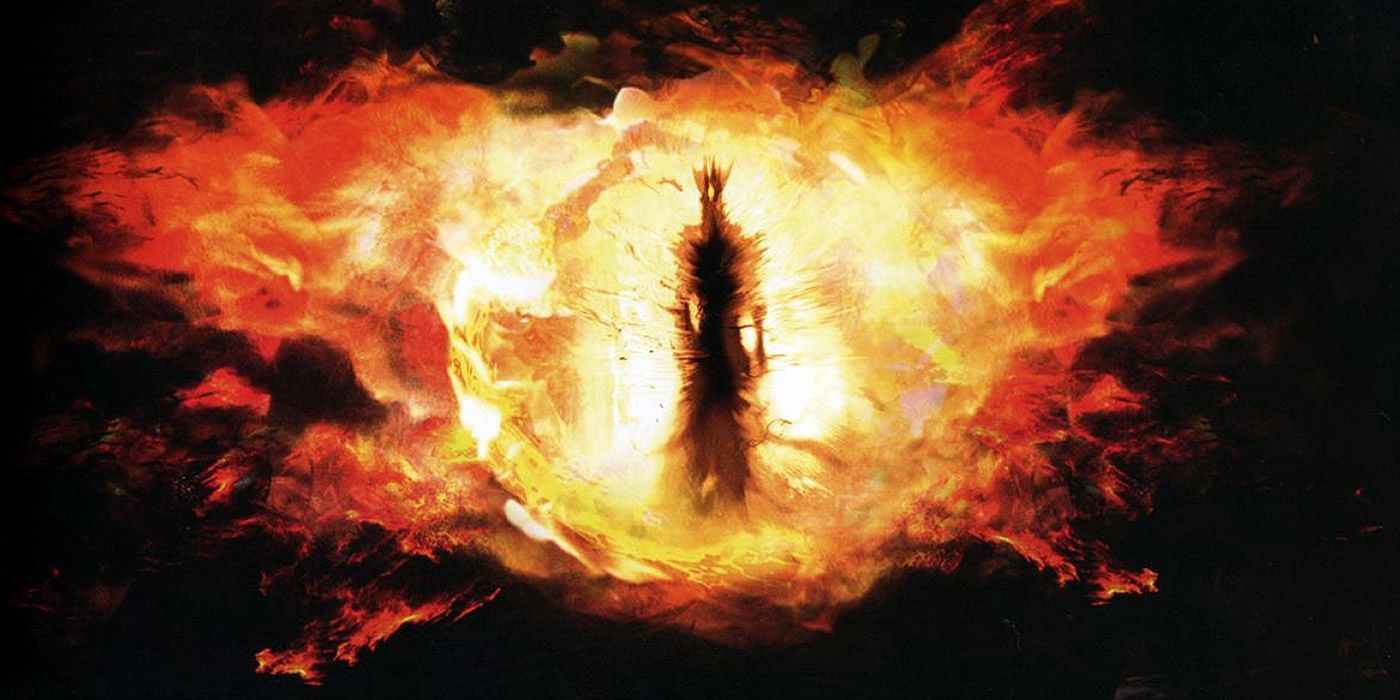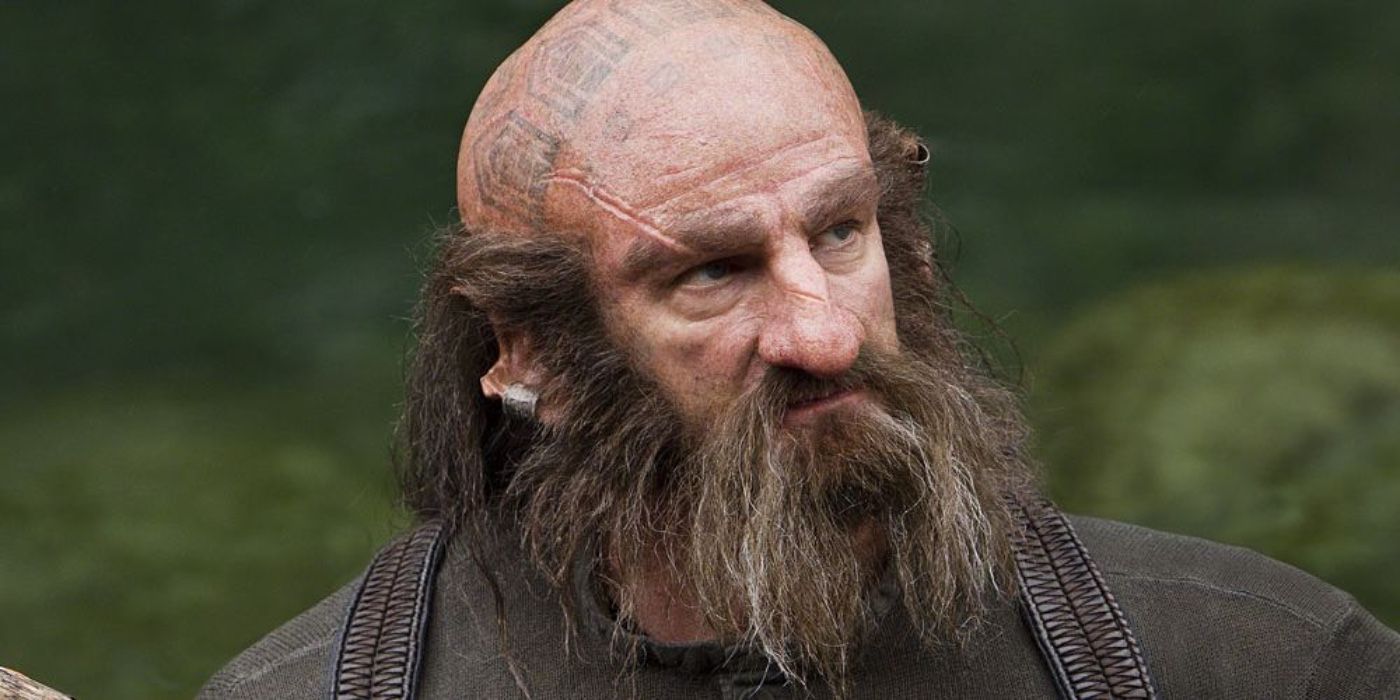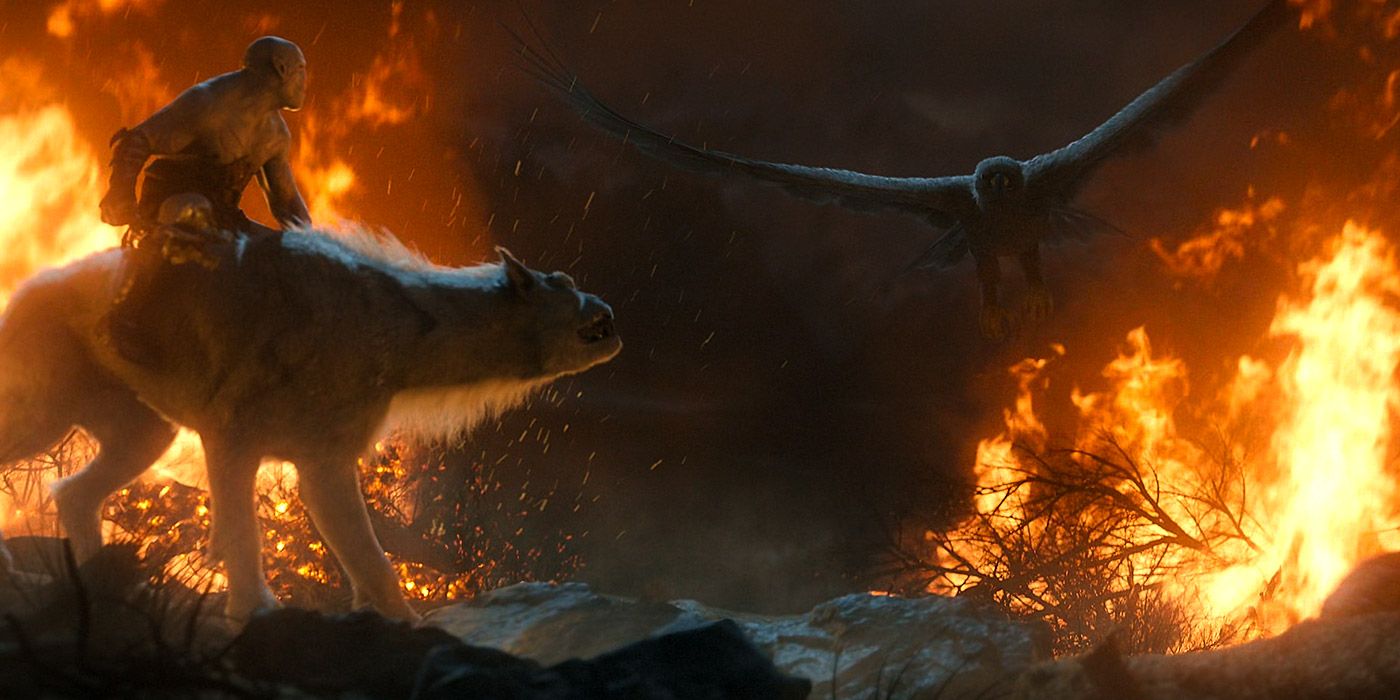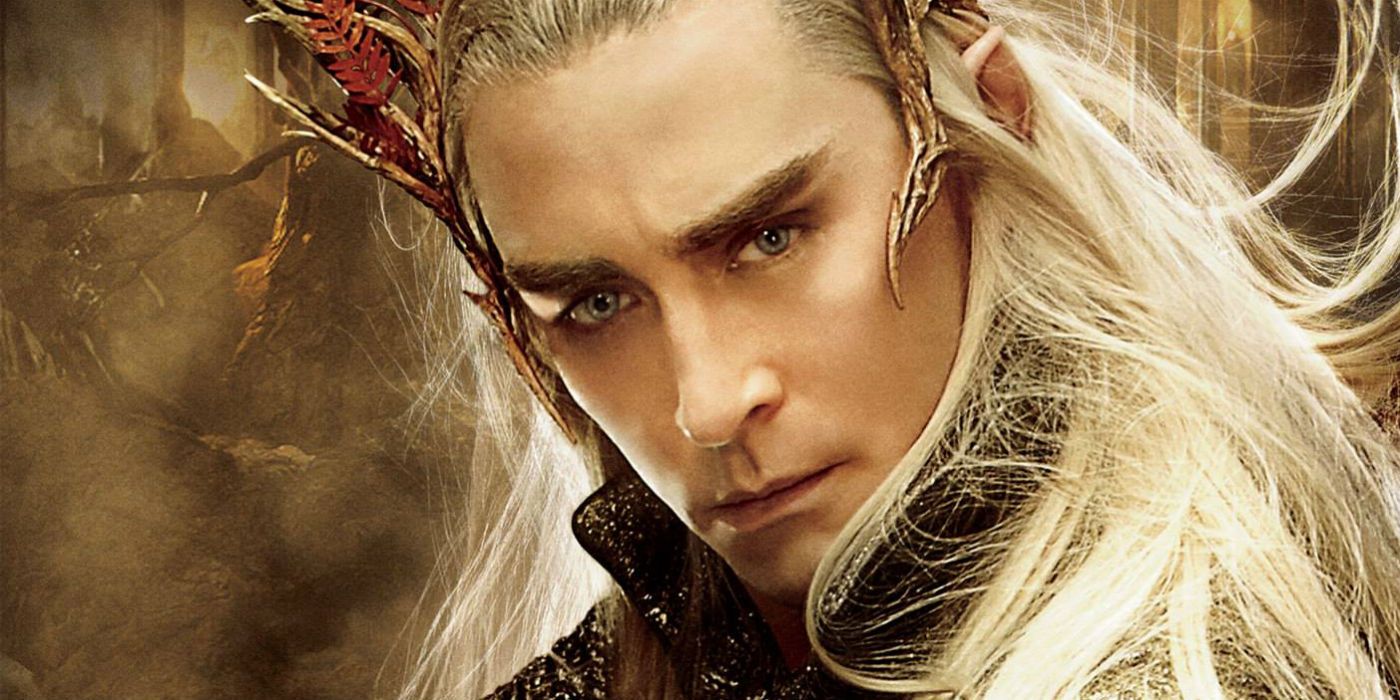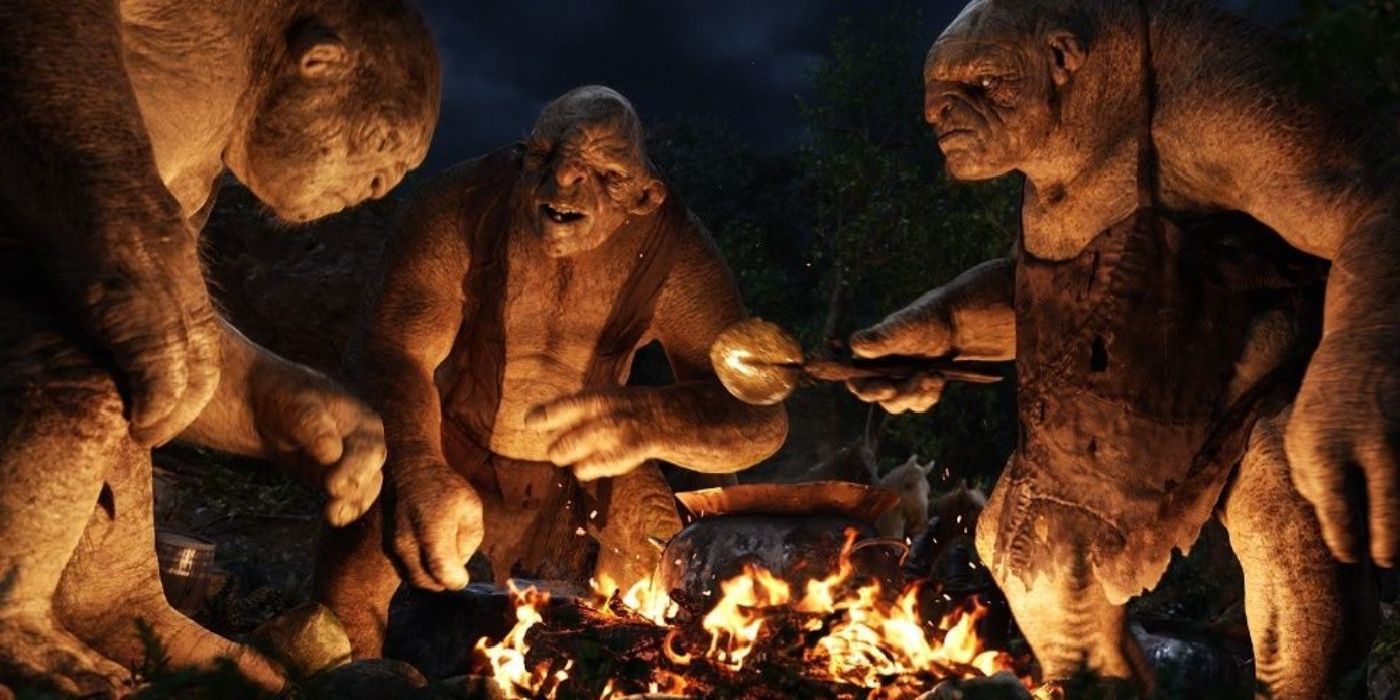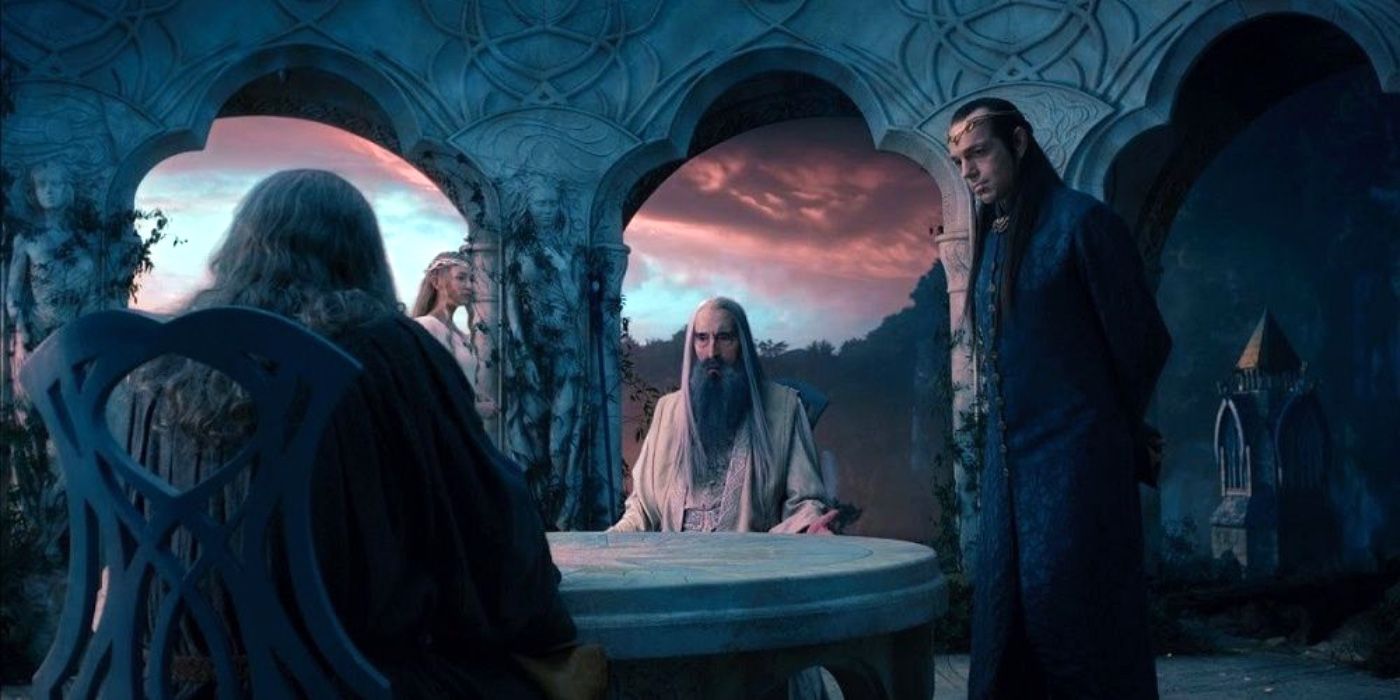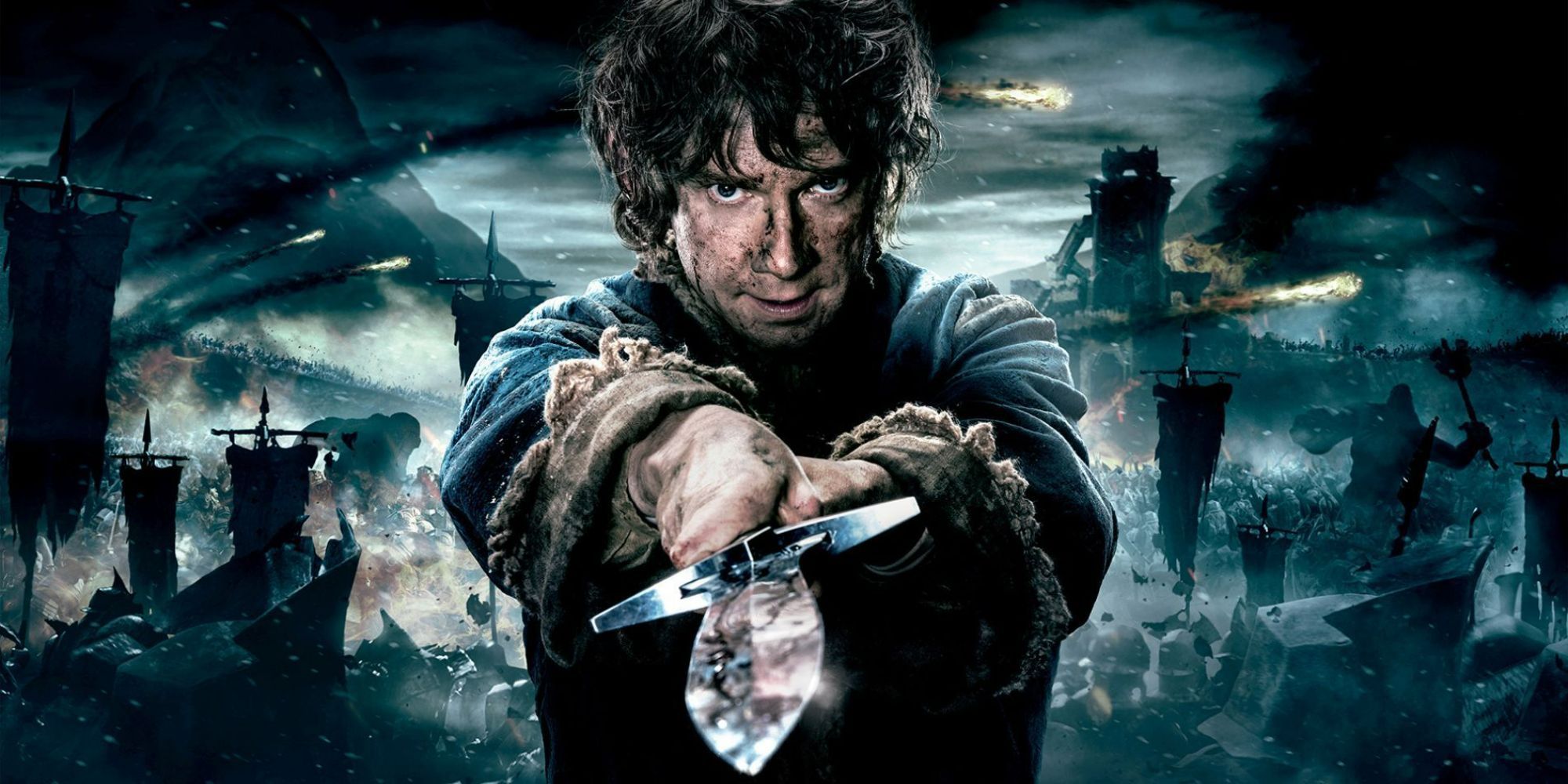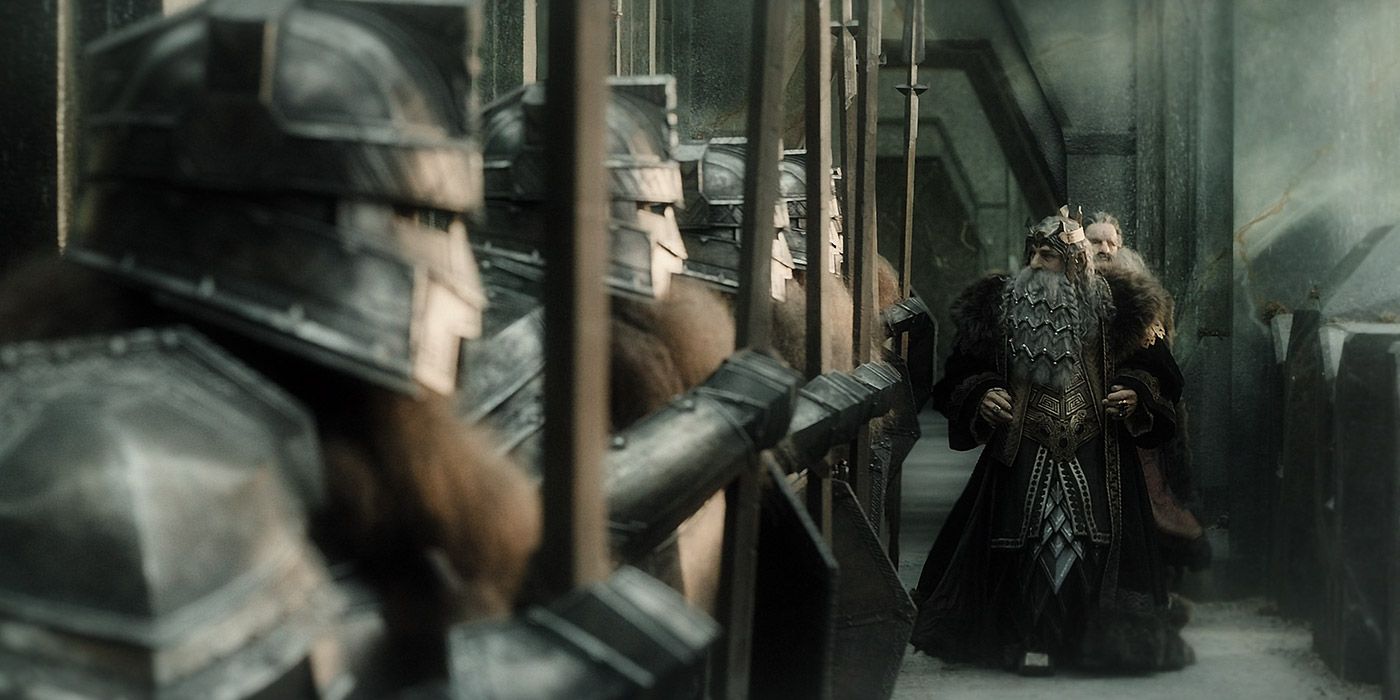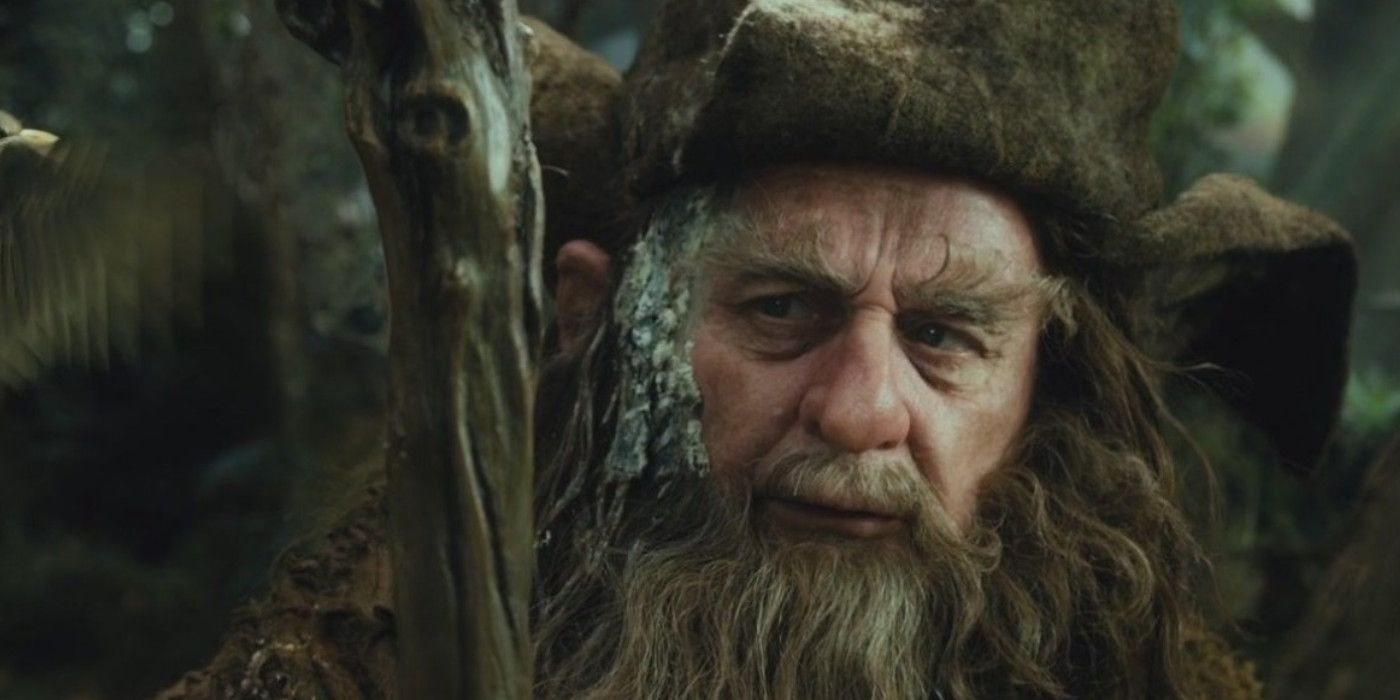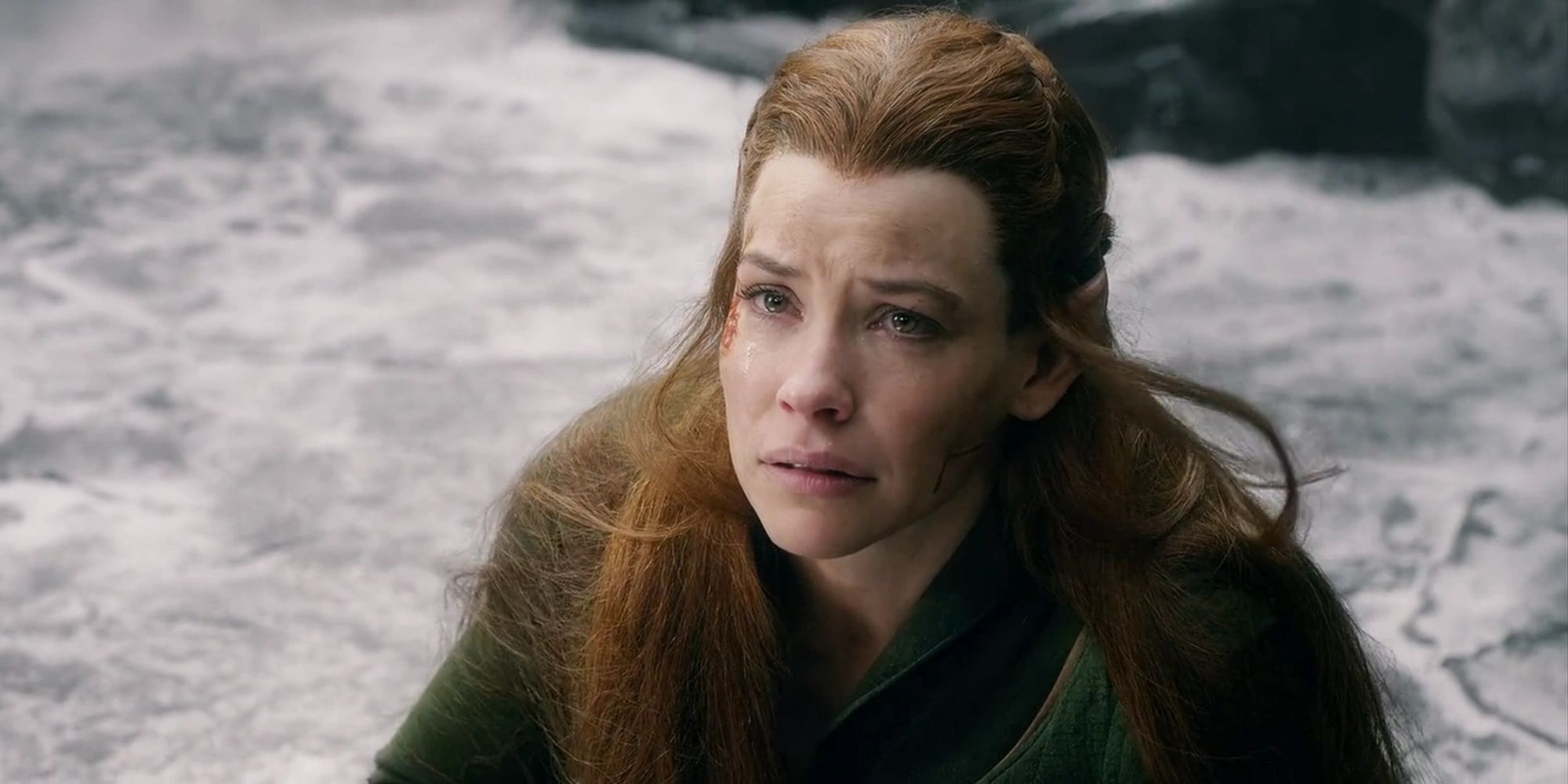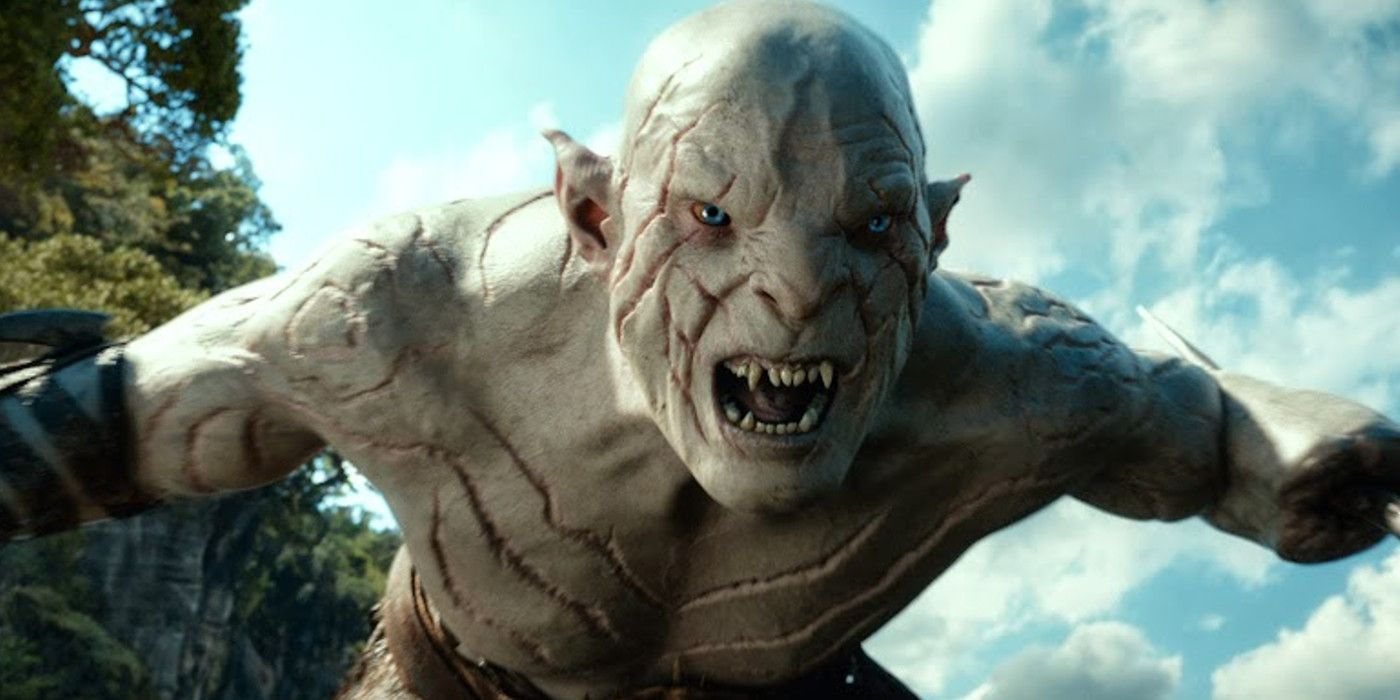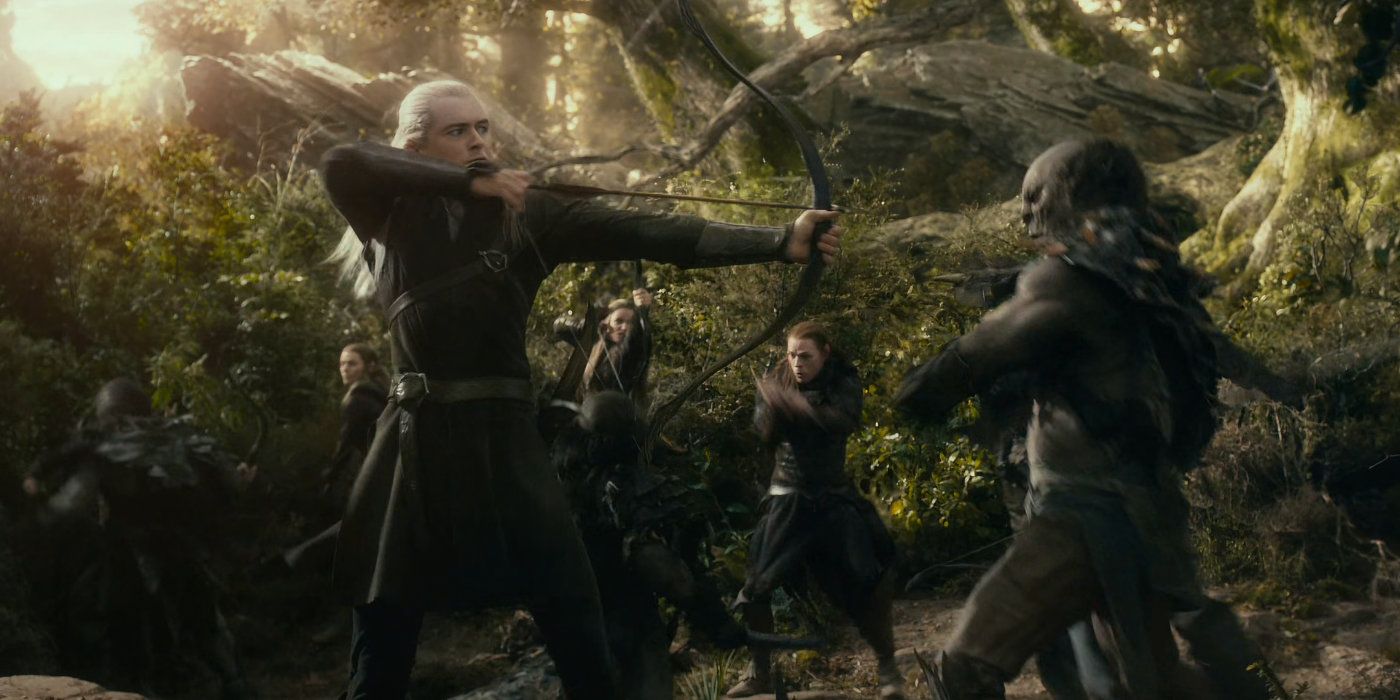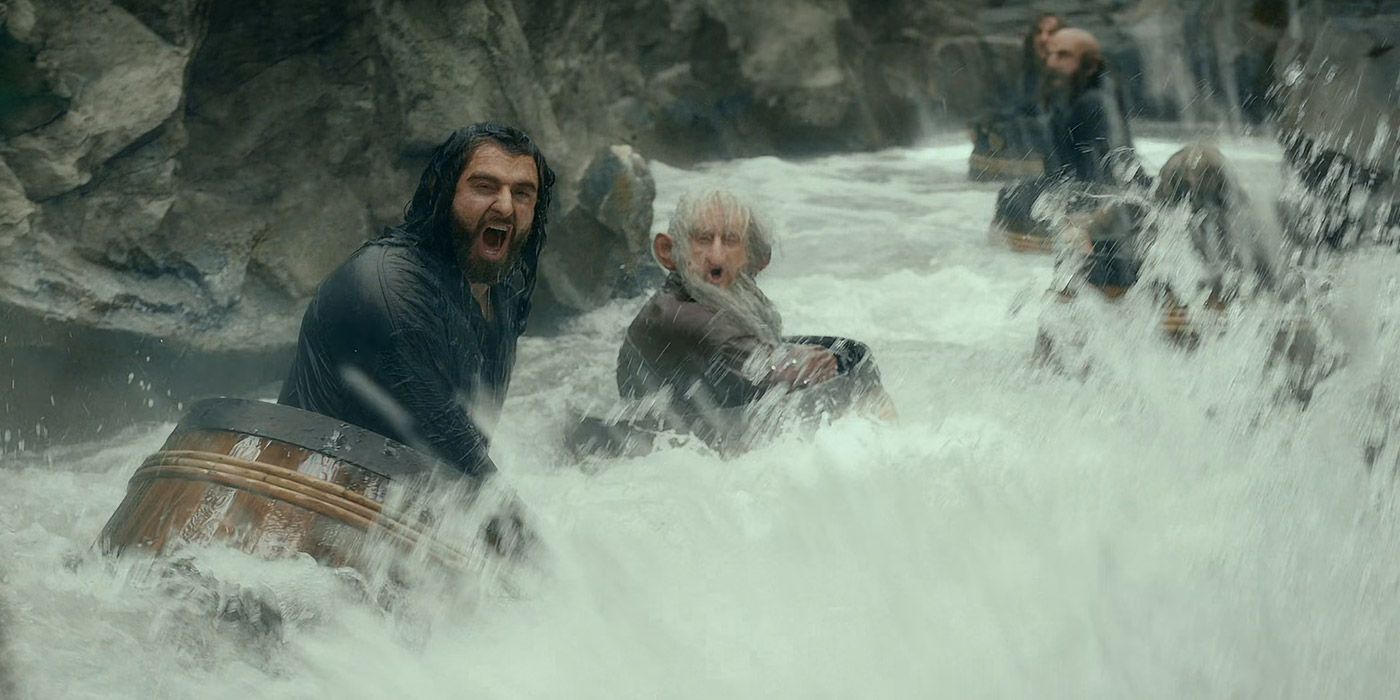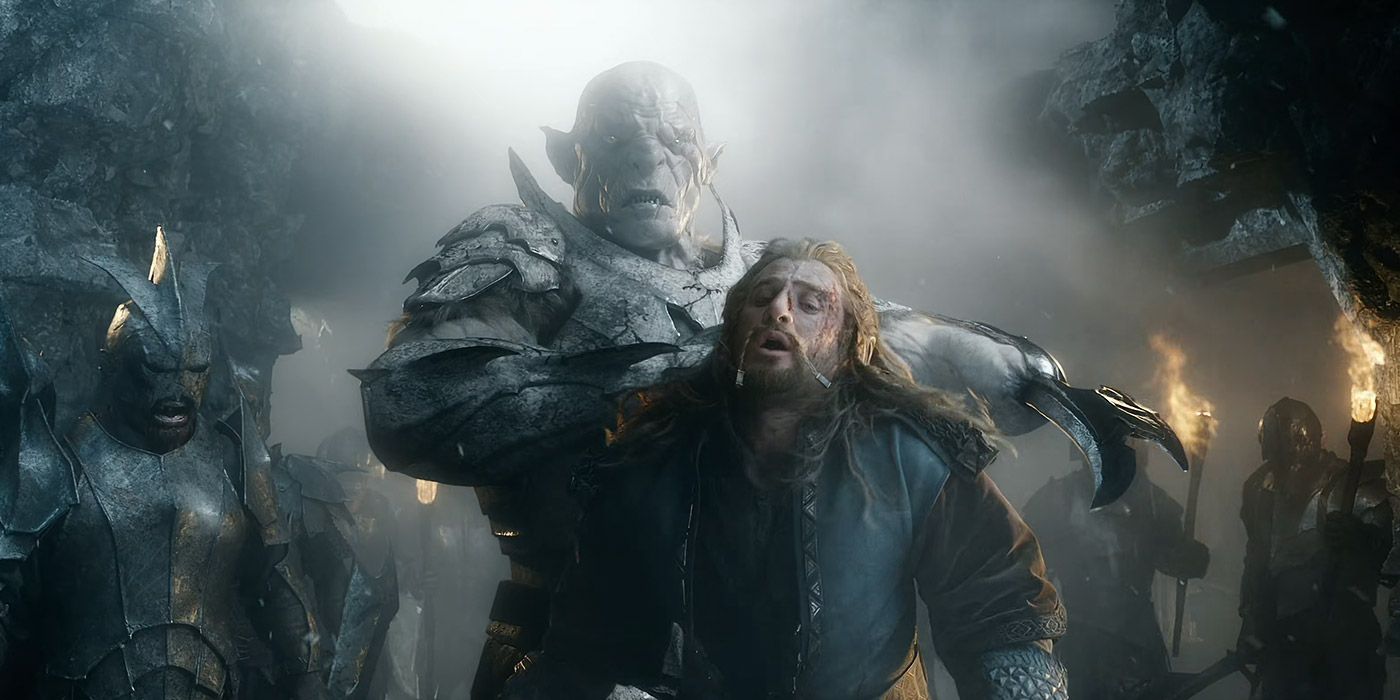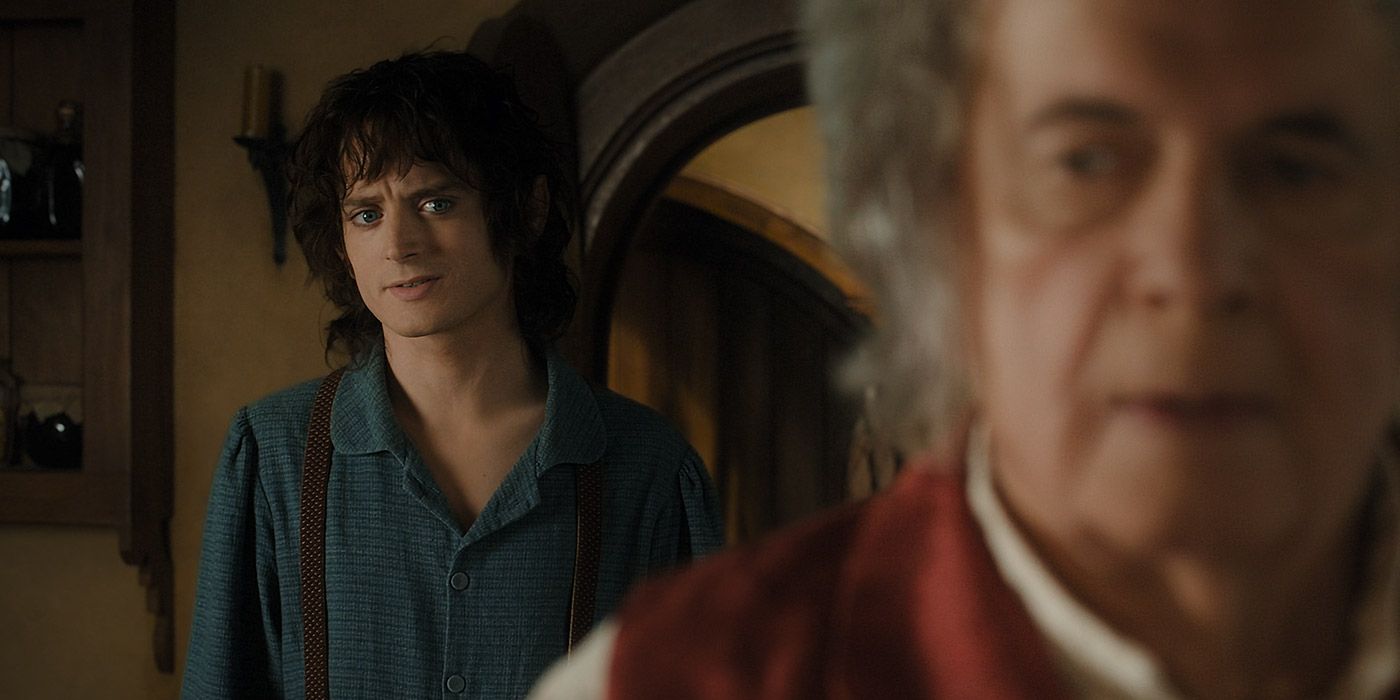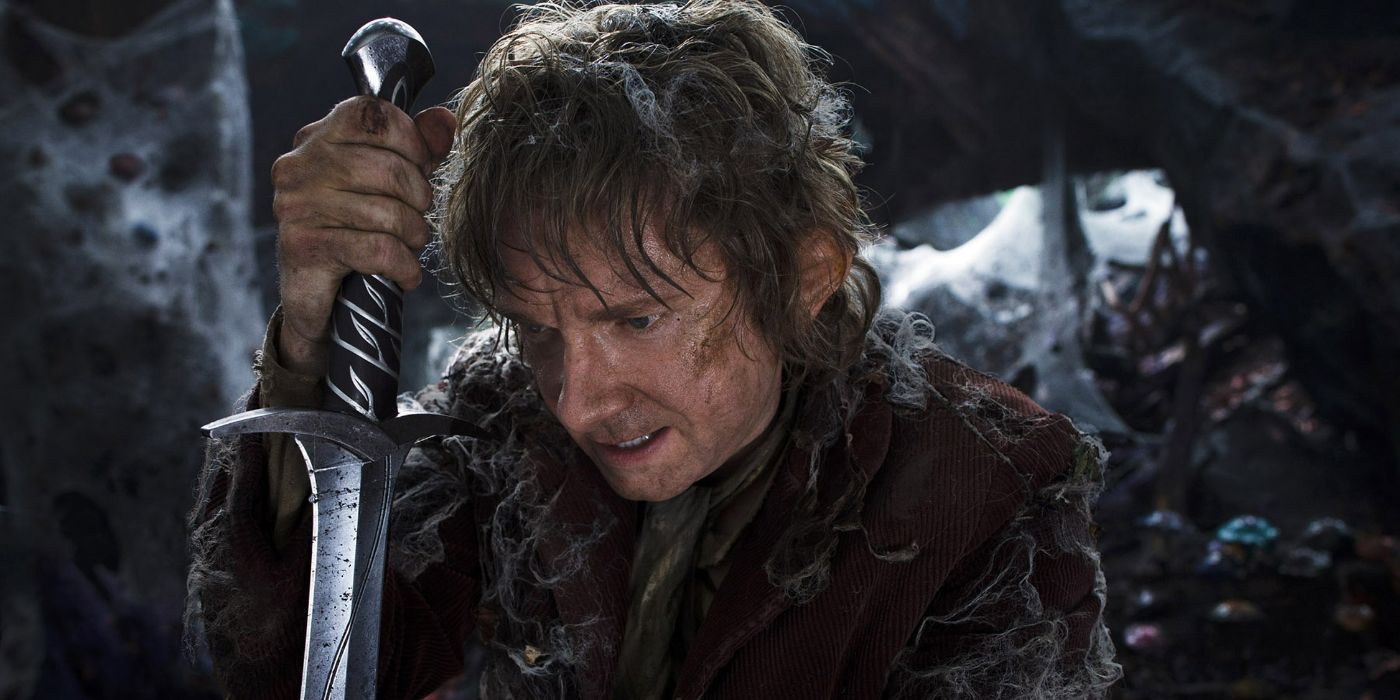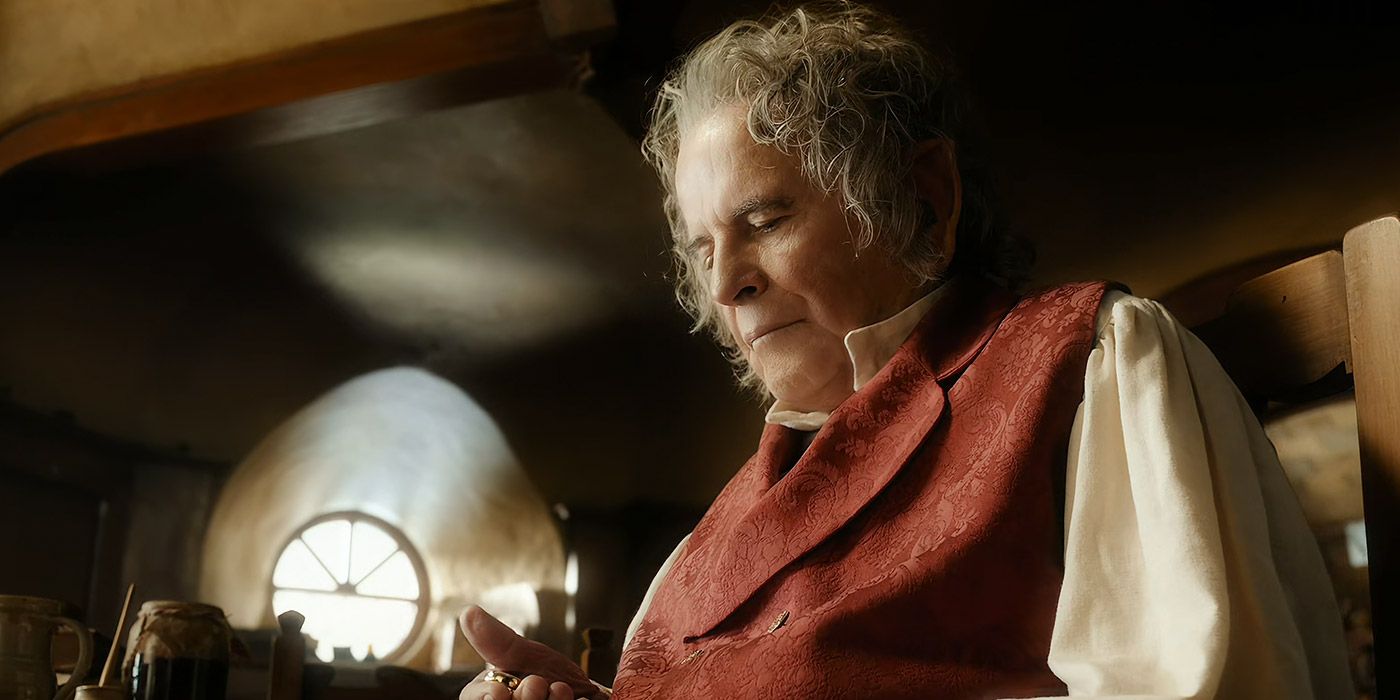In the case of The Hobbit book vs movie, there are several surprising changes that took place. When Peter Jackson announced that he’d be heading up the theatrical remake of JRR Tolkien’s Lord of the Rings prequel, The Hobbit, the response was one of excitement. When it was announced that it was being made into a trilogy, fans of the book were confused, given how little the amount of source material was available to flesh out such an ambitious project. In his transformation of the book into a trilogy of big-budget Hollywood action blockbusters, Jackson took a ton of creative liberties.
What this inevitably meant is that the differences between The Hobbit book and movie are stark. Jackson implemented changes galore, adding in plenty of new content which was loosely adapted from Tolkien's other works. Some of it hit the mark, while the rest felt like superfluous filler. There's no question that in the case of The Hobbit book vs movie, Jackson did his best to please audiences. However, there were a few alterations that many fans didn't feel fit the story at all, making it seem like Jackson was trying to add extraneous connections to LOTR to capitalize on its success.
Gandalf's Reason For Seeking Out Bilbo
Gandalf's reasons for finding Bilbo are different when looking at The Hobbit book vs movie. In the novelization of The Hobbit, it is established that Gandalf seeks out Bilbo for the quest, particularly because of a memory he had of his mother. According to Gandalf, he was impressed by Belladonna Took, because of her adventurous spirit and personality, and he hoped that side would come out if Bilbo joined them on an adventure.
In the film, Gandalf reminisces about knowing Bilbo as a young boy, who adored the thought of danger, excitement, and adventure. The change isn't a huge one, but it does say a lot about Bilbo's character as he appeared in the book, versus the film adaptation. Either way, it's an opportunity for Gandalf to deliver one of his best lines of the trilogy.
The Dwarven Contract
Another one of the biggest differences between The Hobbit book and movie is the dwarven contract. The nature and details of the dwarven contract with Bilbo Baggins are never explicitly specified, which is why it's so comical to see the film version go on forever when unrolled. It was Jackson's way of injecting some comedy into the film, especially at such an early start to the story. In the book, the contract is a simple note left on his mantle, with two short paragraphs acting as content. That's a stark contrast to the film version, and one of the few changes Jackson made that actually helped make the story better.
Bilbo Leaving Bag-End
Even the way that Bilbo leaves Bag-End contrasts in the case of The Hobbit book vs movie. This change was small, but noticeable, and it occurs when Bilbo finally decides to make a go of it and join the dwarves on their adventure. In the film, he races after them with a backpack full of stuff and catches up with them before they get too far down the road. In the book, it is said that Bilbo left Bag-End without even a handkerchief in his pocket. In truth, Jackson's change was probably for the best, as any Hobbit would never run off without a few of the comforts of home.
Knowledge Of The Necromancer
Sauron is a mystery to those who only watched the movies, but changing Gandalf's knowledge of the Necromancer arguably broke canon when it comes to The Hobbit book vs movie. In The Hobbit films, Gandalf learns of the Necromancer when he speaks to Radagast, which is what Peter Jackson used as the reason for Gandalf leaving Thorin and company. However, in the book, Gandalf is already well aware of the Necromancer. In the book, Gandalf has already visited Dol Guldur, and heard of the Necromancer, as it was there that he encountered Thráin, the father of Thorin Oakenshield, and received the map and key that he later gives to Thorin.
Dwalin's Beard
Though it was not a massive change that impacted the plot, there was one element of Dwalin's appearance that classifies as one of the differences between The Hobbit book and movie. Interestingly enough, the book says, "It was a dwarf with a blue beard tucked into a golden belt, and very bright eyes under his dark-green hood." This is a stark change from how Dwalin is shown in the movie, with a brunette beard and dark eyes.
While some readers have argued over the ages that it wasn't meant to literally be blue, others believe Dwalin's beard really was meant to be that way, in order to seem "otherworldly." When the script was written for the Hobbit film, Jackson opted to take out a lot of the whimsy to make it more in line with The Lord of the Rings, meaning Dwalin's blue beard was one of the first things to go.
Contacting The Eagles For Help
Another one of the biggest changes in the case of The Hobbit book vs movie sees Gandalf acting when he canonically did not. When Azog and his orcs descend upon the party at the end of the first Hobbit film, Gandalf contacts Gwaihir, the Lord of the Eagles, via a carrier moth. This was done primarily to act as a nod to the first Lord of the Rings film, where Gandalf escapes imprisonment from the rooftop of Orthanc, in much the same way.
In the book, however, Gandalf never makes the attempt. Rather, Gwaihir himself notices the ruckus from afar, and soars through the skies to come to their rescue. It's hard to tell which version is better, but given Gandalf's relationship with the Eagles, the film version is probably the better one, despite the small change made to Tolkien and Lord of the Rings canon.
Thranduil's Face
More key differences between The Hobbit book and movie see Thranduil adding backstory that isn't in the novels. Interestingly, Thranduil is never referred to by name in The Hobbit book, but is simply called "the Elvenking." However, there's an even bigger difference between the text and the movie, which is Thranduil's burned face that he hides with magic.
Thranduil attributes this to the "fire serpents in the North," but this is not mentioned at all in the book, nor is there any record of elves being able to hide old wounds or scars in this manner. For that reason, it was primarily added to give Thranduil a more menacing and obsessive character, even though he proves himself to be one of the most powerful heroes in The Hobbit.
Tricking The Trolls
The great The Hobbit book vs movie debate also sees a cunning act perpetrated by Bilbo originally belonging to Gandalf. In The Hobbit movies, it is Bilbo Baggins who cleverly tricks the trolls as they discuss the best ways to cook the dwarves. Eventually, the sun rises, and they are caught unawares, leading to their permanent demise. In the book, it is Gandalf who actually deceives the trolls by throwing his voice, pretending to be one of them, and making them argue among themselves until dawn arrives, and turns them to stone. In the films, Gandalf was not present during the scene.
The White Council
Differences between The Hobbit book and movie also see the inclusion of the White Council. The Hobbit movies feature the White Council, with both Saruman and Galadriel present in Elrond's home of Rivendell. However, neither Saruman nor Galadriel are mentioned in The Hobbit book, and the White Council does not meet during the narrative. Though this is different from the book, it does act as fan service, as it means that viewers got to see some more of their favorite characters from The Lord of the Rings movie trilogy, as well as adding some more depth and drama to the plot. In truth, however, it was never this dramatic.
The Length
Arguably the most glaring change brought up in The Hobbit book vs movie debate is the length. The Hobbit is a rather short book, especially in comparison to the intimidating size of Tolkien's Lord of the Rings trilogy. The question remains as to why Jackson or the studio would ever think it was a good idea to flesh the story out across three films. By placing various amounts of filler in between established moments from the book, Jackson tried to fill in the blanks and create a stronger story. In truth, the entire tale could have been told in two parts, avoiding unnecessary filler and focusing on a tight narrative.
The Prologue
One of the most welcomed differences between The Hobbit book and movie was the addition of a prologue. The world of Lord of the Rings is particularly complex, which is why the prologue in Fellowship of the Ring was so effective. Audiences were given something very similar at the start of The Hobbit, and even though it didn’t occur in the book, it did actually help establish the narrative moving forward. Middle-earth lore was built across many books, with plenty of interesting details only appearing in footnotes. With such a wellspring of detailed information, these prologues helped create exposition and further pull audiences into the magnificent fantasy world.
The Presence Of Radagast The Brown
In The Hobbit, Tolkien mentions the wizard Radagast The Brown only a handful of times as one of the five wizards of Middle-earth. In the movies, Peter Jackson greatly expands his role, allowing the character to interact with the likes of Gandalf and Bilbo, while starring in his own scene in which he helps avert a group of goblins from catching up to the main characters.
He also provides comic relief as an innocent, eccentric, and bumbling character who hides a deep, vast power. The expanded story of Radagast's character is another welcome change in The Hobbit book vs. movie debate. Obviously, these parts of his personality never came across through Tolkien’s brief mention of his existence, but it was nice to see another wizard besides Gandalf and Saruman on Middle Earth.
The Presence Of Tauriel
Sometimes new characters work, but Tauriel's addition is another one of the differences between The Hobbit book and movie that had audiences scratching their heads because of the way Jackson handled her arc. Played by Lost’s Evangeline Lilly, Tauriel is a character exclusive to the film adaptation of The Hobbit, and she isn’t in any of The Lord of the Rings films, the first The Hobbit movie, or the book, at any point.
This was one of the more controversial additions to the film trilogy, and one many fans felt was unnecessary. She was seemingly created to provide a strong, relatable female character that doesn’t really exist in The Hobbit book, and also to act as one part of a tragically romantic love saga between herself, and the dwarven character Kíli. It also led to what seemed like a Hobbit plot hole, due to her character's unfinished story arc.
The Presence Of Azog
The topic of Azog in The Hobbit book vs movie debate causes an issue, as his presence in the film speaks to a timeline problem. The character of Azog is one of the most powerful villains in the Hobbit/LOTR universe, and he does exist in Tolkien's established lore, but he was beheaded by the character Dain long before the events of The Hobbit took place. As such, the character was essentially lifted from the pages of Middle Earth history, and deposited into the trilogy to act as a principal antagonist.
With one arm missing, Azog proved to be an effective and intimidating villain that could act as a counterweight to Thorin Oakenshield's character. His story arc ended in suitably dramatic fashion during a final showdown between the two, in the third and final film. However, some readers took umbrage that Azog was included as another antagonist when he didn't originally have a part in the central story of The Hobbit.
The Presence Of Legolas
One of the more debated negative differences between The Hobbit book and movie was the inclusion of Legolas. Peter Jackson wanted to establish some consistency between The Hobbit and Lord Of The Rings, even if the former was a prequel. As such, audiences see Legolas appear in both The Desolation of Smaug, and The Battle of the Five Armies. However, Legolas doesn’t appear in the book at all, and it feels as if he was deposited into the film trilogy as a way to bring back an audience favorite. In truth, he added little to the overall story, and in some cases, actually deprived other characters of the limelight.
The Barrels
It might not be as important as many other differences between The Hobbit book and movie, but the barrel scene is nevertheless worth mentioning. When the dwarves escape the hall of the elven king, they float down a river using barrels as boats. In the books, these are sealed, rather than open with the characters sticking out. This allowed for a more visual connection to the scene, as it established the dwarves' presence, and also the battle that followed shortly thereafter. It also added more tension and excitement to the story, by introducing such a chaotic battle.
The Dwarf Deaths
One of the most heated points of debate in the case of The Hobbit book vs movie has to do with Kíli, Fíli, and Thorin. One piece of storyline consistency between The Hobbit and The Lord of the Rings is the death of Kíli, Fíli, and Thorin. However, the manner in which they died in the movies quickly became a point of contention among readers of Tolkien's works. The movies show the three being slaughtered rather brutally during a fight with Azog and his orcs. The book finds them charging into a battle that they know they won’t survive, dying as brave heroes as a result.
The Frodo Cameo
More scrupulous readers of Tolkien's works were a little put off by Frodo's inclusion in The Hobbit book vs movie debate. It can be argued that one of the more pointless moments in The Hobbit was Elijah Wood’s cameo appearance as Frodo Baggins. It occurred when Bilbo told him a very rough version of his original adventures. Since Tolkien would not write The Lord of the Rings until many years after The Hobbit, Frodo was not even a concept.
In fact, Tolkien’s version of this was the reverse, something that only further upset readers. At the start of The Fellowship of the Ring, it is likely that the opening scene of the shire was built around the aging Bilbo, in order to glean some connection to the previously released Hobbit book. Therefore, it wasn't worth bringing Frodo into the Hobbit films at all, and the cameo scene felt similar to what Jackson was trying to accomplish with including Legolas.
The History Of Sting
The act of Bilbo finding, choosing, and naming his sword Sting was an important piece of development for the character, given its status as one of the most iconic weapons of Tolkien's works. Of course, this also turns out to be one of the biggest differences between The Hobbit book and movie. In the movie, he is simply given it by Gandalf, after the wizard finds it on the floor of the troll hoard. The entire scene of the company finding the dwarven weapons seems a bit lazy in comparison to the books. It was more of a convenient way to establish the presence of the blades, with very little exposition or attention given to each of them.
Bilbo's Age Difference
One of the biggest issues audiences had about the Hobbit trilogy was the changing of lead actor Ian Holm to Martin Freeman. This wasn't due to a dislike of the latter, but rather, a complete contradiction of Bilbo's character from the books and by far the biggest sin cited in The Hobbit book vs movie debate. It is clearly established that Bilbo's possession of the One Ring meant that he maintained his youthful appearance for decades after finding it. Yet, the stark contrast in physicality between the two actors pretty much robs the story of that fact and creates a gaping plot hole.

